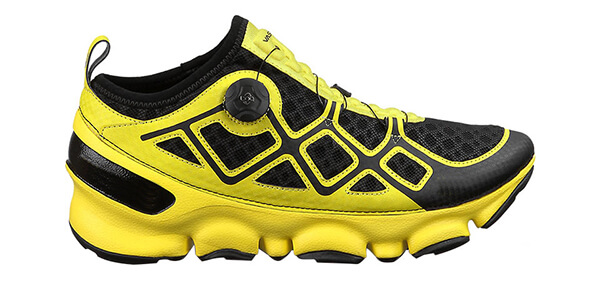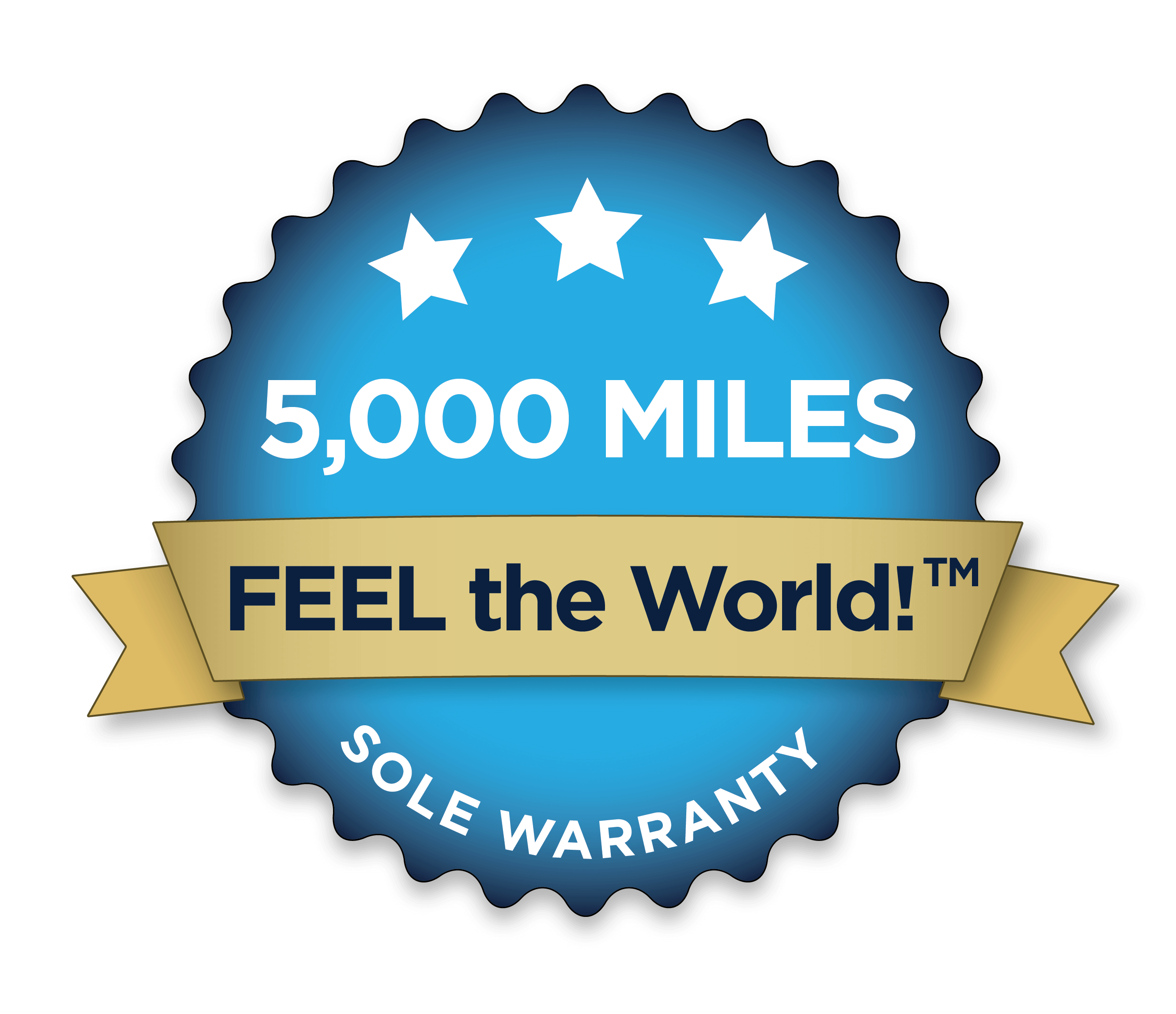When you run, you can hit the ground with anywhere from 3-6 times your body weight.
That’s a lot of force!
Clearly you need a LOT of cushioning to deal with that force, right?
Well, this is the argument that underlies all non-minimalist shoes, but it’s really the premise behind so-called MAXIMALIST shoes, like this one:

The equation, if you will, is something like: TONS of cushioning = less shock = safer running = fewer injuries
I’ve talked about whether this idea holds up here and here.
But now Science Daily reports on another study that concludes:
Despite transition period, maximal running shoes may still increase risk of injury
- “A six-week transition period did not help wearers adjust to ”maximal” running shoes, indicating that increased impact forces and loading rates caused by the shoe design do not change over time.”
This was published recently in the American Journal of Sports Medicine. The lead author is J.J. Hannigan, a post-doctoral researcher in the FORCE Lab at Oregon State University’s Functional Orthopedic Research Center of Excellence (FORCE) Lab.
The shoes, which feature increased cushioning, particularly in the forefoot region of the midsole, affect runners’ biomechanics, leaving them at increased risk of injury, said Christine Pollard, director of the Bend campus’s Functional Orthopedic Research Center of Excellence (FORCE) Lab and a co-author of the study.
Usually reading about scientific studies doesn’t make me laugh, but this line did:
“These shoes may work for certain people, but right now we just don’t know who they are good for,” said Pollard
Some people wonder why adding cushioning INCREASES loading forces.
Let me toss out two theories:
- Many maximalist shoes also have elevated heels. Harvard’s Daniel Lieberman has shown that having a high-heeled running shoe can make even a habitually barefoot runner land on their heel, with the foot contacting the ground further out in front of the body, with the leg straighter.In short, when you land, you’re “putting on the brakes” and not relying on cushioning instead of the springs and shock absorbers built into your body, also known as, well your whole body! (but mostly your legs and feet)
Any foam works best at a particular speed of compression and amount of force, and the odds that your body and running style match the characteristics of the foam isn’t very high.
- Your feet are supposed to FEEL the ground. That’s why you have over 200,000 nerve endings in your soles — more than anywhere but your fingertips and lips.You use the information you get from feeling the world to know how or what to step on, or in… or what not to step on or in. It also helps you balance.
When your brain isn’t getting that info from your little piggies, it may have you hit the ground harder to try to get the information it needs.
Let me make a prediction about what this latest study will do to the sales of maximalist running shoes.
Nothing.
Sadly.
Every few years, for the last 50-ish years, running shoe companies come out with some “new and improved” form of cushioning. And despite repeated studies with results like this one, each time they launch a new foam, a new gel, a new air pocket, they’re able to convince the majority of runners that this time is different, this one will REALLY work.
It’s like they’re the shoe company that cried “Wolf” but unlike the villagers in the story, who stop rushing to save the sheep and shepherd from the non-existent threat, we keep running to our nearest shoe store for the latest, greatest, thing.
It seems like you can’t change people’s mind with, well, uh, facts.
It is, of course, our hope and our goal for more and more people to explore the “radical” option — let your feet do their job. Let your feet be feet.
Let them bend, and move, and flex, and FEEL the world.
Use the natural springs and shocks that you carry with you all the time. In short…
Live Life Feet First!
If you decide to do that in a pair of Xero Shoes, we’re here to help.
If you want to have real fun and venture out barefoot, we’re here for that, too.
Let us know what you think. Leave a comment, below.
The content of this post does not constitute and is not intended to be a substitute for professional medical advice, diagnosis or treatment. Always seek the advice of a physician or other qualified health provider with any questions or concerns you may have about your health or a medical condition.









 Fostering honest and responsive relationships between businesses and consumers.
Fostering honest and responsive relationships between businesses and consumers.












